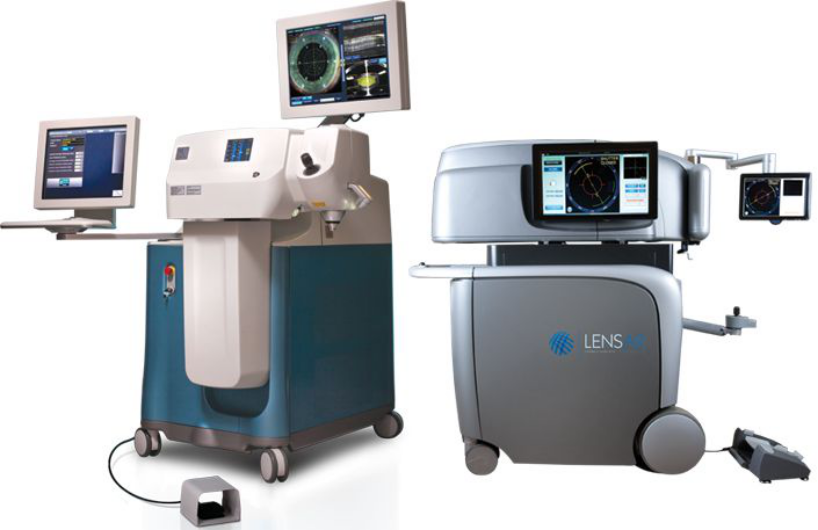Department of Cataract
● He Eye Specialist Hospital is one of the earliest hospitals in the country to introduce painless cataract surgery technology.
● He Eye Specialist Hospital introduced microtrauma phacoemulsification technology to fill the technological gap in Northeast China.
● The hospital introduced the world's leading LensAR 3D femtosecond cataract device from the United States, taking cataract surgery into the scalpel-free era.
● Multifocal artificial lens to solve presbyopia synchronously.
Introduction to the Department:
He Eye Specialist Hospital keeps the record in terms of the number of cataract operations in Northeast China for many years. Being an advocate of painless minimally invasive cataract surgery, the hospital introduced microtrauma phacoemulsification technology, which filled the technological gap in Northeast China. Innovative technologies such as cold phaco and anesthetic awareness continuously upgrade the painless minimally invasive technology to new heights. In recent years, the hospital has applied femtosecond laser to treatment of cataracts, bringing cataract surgery into a scalpel-free era, so that more cataract patients will see the light again.
Indications:
Congenital cataract, senile cataract, complicated cataract, traumatic cataract, metabolic cataract, glaucomatous cataract, drug-induced and toxic cataract, cortical cataract, nuclear cataract and posterior subcapsular cataract caused by various reasons.
What is cataract?
In the eyes of normal people, there is a biconvex transparent body called a lens. No matter what causes the lens to degenerate or turbid, making it opaque and even affecting vision. It is called cataract.
Symptoms of Cataract:
1. Faded colors and trouble with bright lights;
2. Dot-shaped or sheet-like shadows with fixed position and unchanged shape appear in front of the eyes;
3. Distorted and double vision;
4. Day blindness or night blindness;
5. Halos around light will appear when watching the lights at night;
6. Symptoms of presbyopia suddenly reduced and so on.
Dangers of Cataract:
Cataracts are not just “unclear”. According to the World Health Organization, people with poor visual quality have a life expectancy that is 7 to 8 years lower than the average people. If treatment is delayed, cataract will also cause vision loss which affects normal life, acute attacks of glaucoma, other ocular complications which can lead to blindness if getting severe. It will pose a threat to the treatment of other fundi diseases.Cutting-edge equipment:

LensAR femtosecond laser surgery platform
Femtosecond cataract surgery uses femtosecond laser to treat cataract. It mainly uses femtosecond laser technology to make precise and minimally invasive incisions under the guidance of the computer, to perform perfect lens capsulorhexis and nucleus chopping, thereby replacing most manual operation in current cataract surgery, correcting astigmatism before surgery, and enabling the perfect vision with “zero diopter” after surgery.
So, what are the advantages of femtosecond laser cataract surgery? The incision is made by laser instead of the scalpel, which shows the entrance into a new era of scalpel-free cataract surgery. The removal of the anterior capsule is also realized by the femtosecond laser, which avoides the inconsistency of the size of the capsulorhexis and the stability of the intraocular lens after operation. Femtosecond laser crushes turbid crystals, which greatly decreases the energy of the breaking nucleus and reduces the loss of endothelium.
There is no need to use a scalpel for making incisions. Laser technology is used in incision, capsulorhexis and nucleus chopping, which completely eliminates the possible artificial or instrumental damages to the eye, and the whole procedure is totally completed by the femtosecond laser and controlled by a computer digitally, thus reducing the standard deviation of operaion by the surgeon.
The application of femtosecond laser has led the surgery to a new height in security and success rate, and also has continuously expanded the scope of surgical indications. Surgery can be performed as long as the patient has blurred vision, which brings trouble to life. In this way, the patient aviods not only a long and painful process from blurred vision to blindness, but also the possibility of complications such as glaucoma and uveitis caused after advanced stage of cataract, and at the same time relieves the patients from pains of incurable treatment for life.
The femtosecond laser splits the cloudy lens (cataract) instantly through the laser. The entire process is monitored in real time by anterior segment OCT. Almost without damages to the eyes, the cloudy lens can be split accurately according to the preoperative design, thus reducing the injury of ultrasonic energy of breaking nucleus. It is good for postoperative recovery.
Before the cataract patients have no other requirements on postoperative vision except for the improvement of vision. But now, with the improvement of living standards, the requirements for postoperative vision have gradually increased. Recently, the advent of several new artificial lenses has brought good news to cataract patients, but for these high-end multifunctional artificial lenses, every step of the entire operation must be accurate. The artificial error has limited the effect of these high-end multifunctional crystals to a certain extent, while the femtosecond laser cataract treatment system can achieve zero error and provide patients with more perfect visual quality as it is is digitally controlled by the computer.
